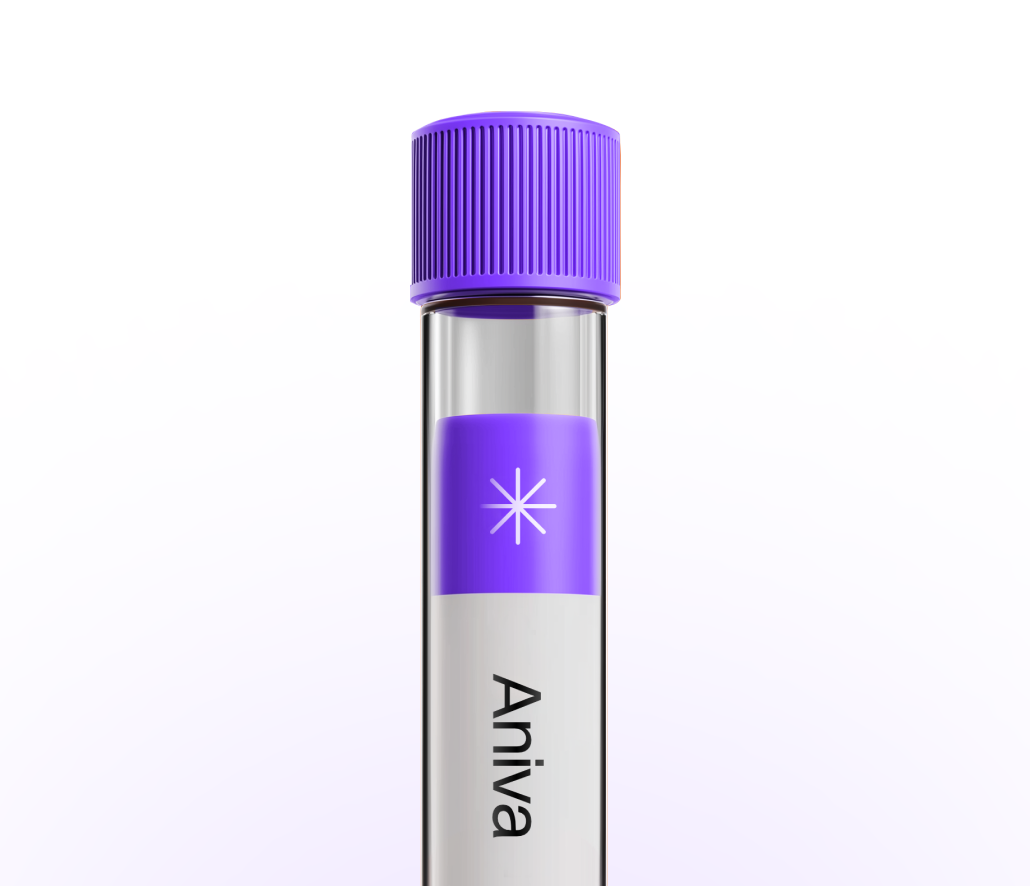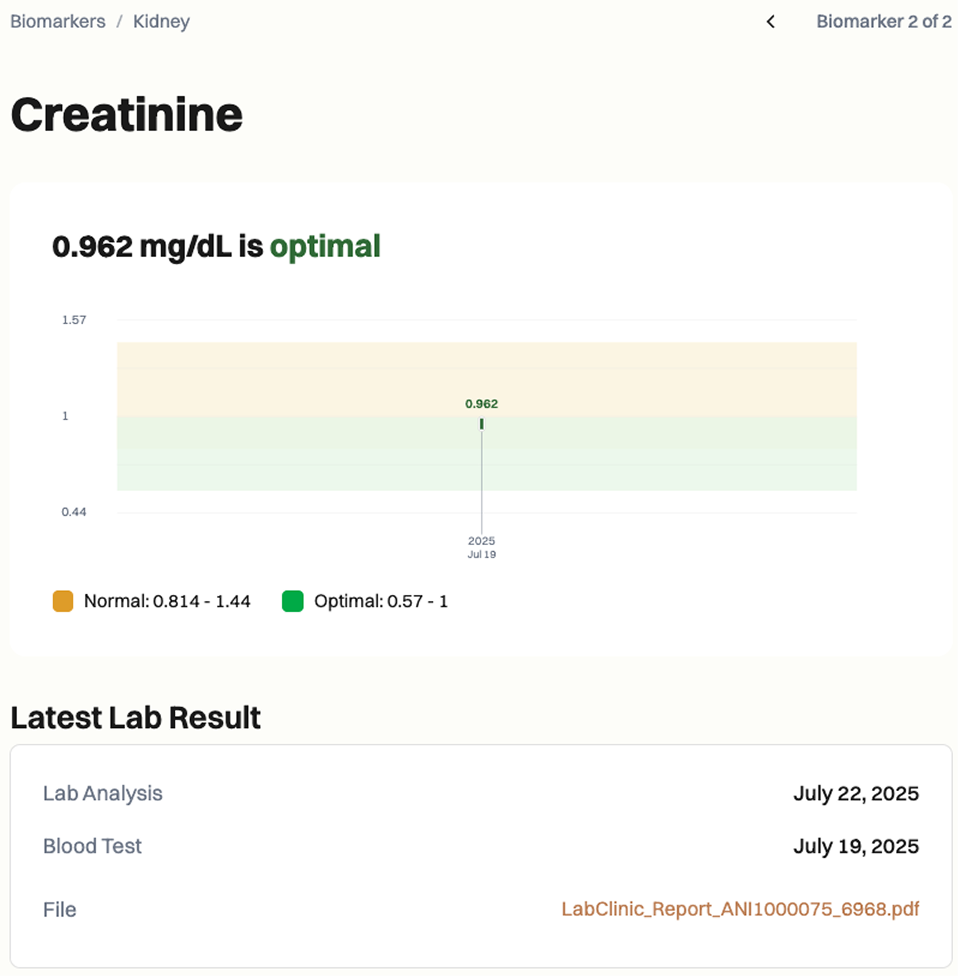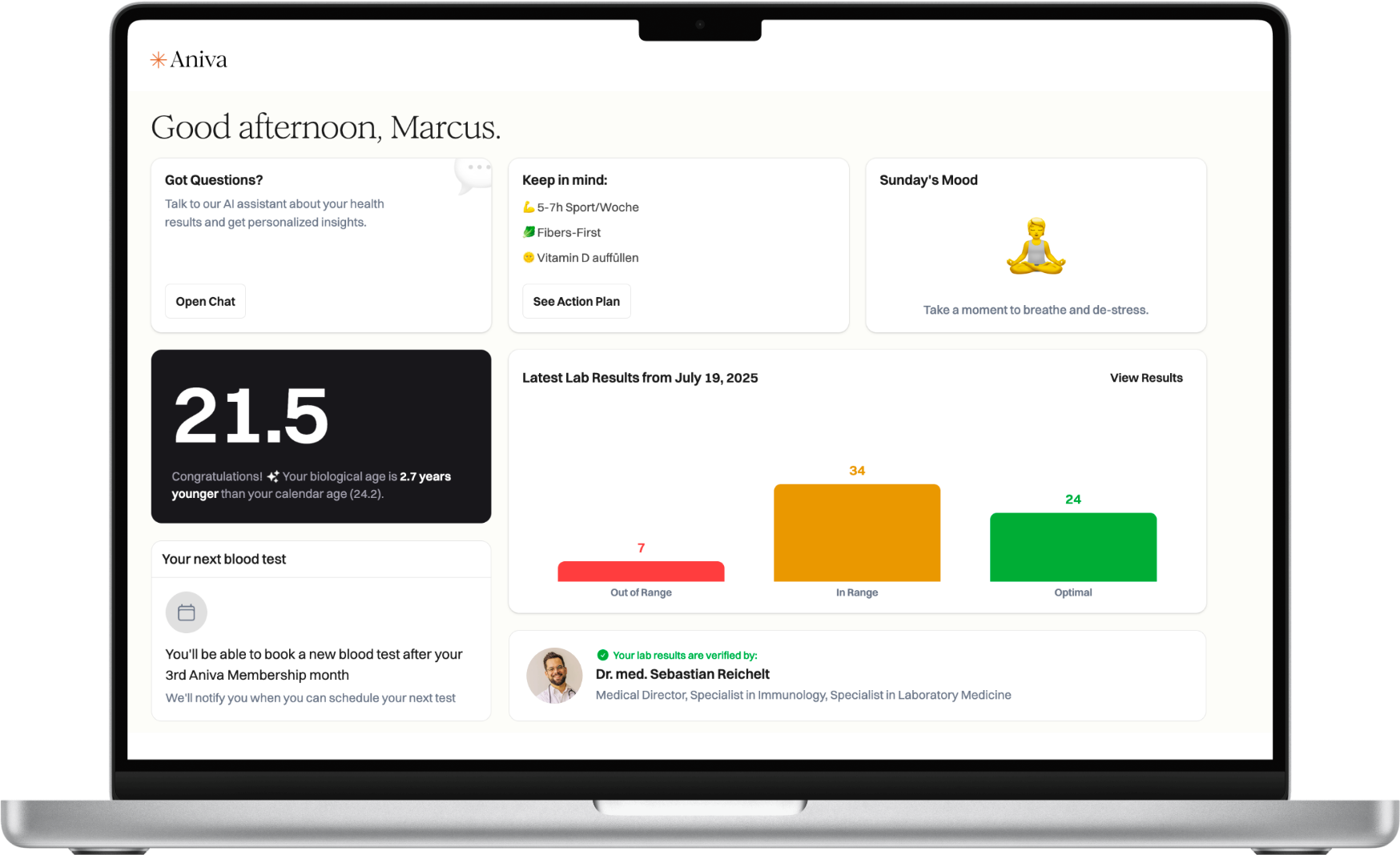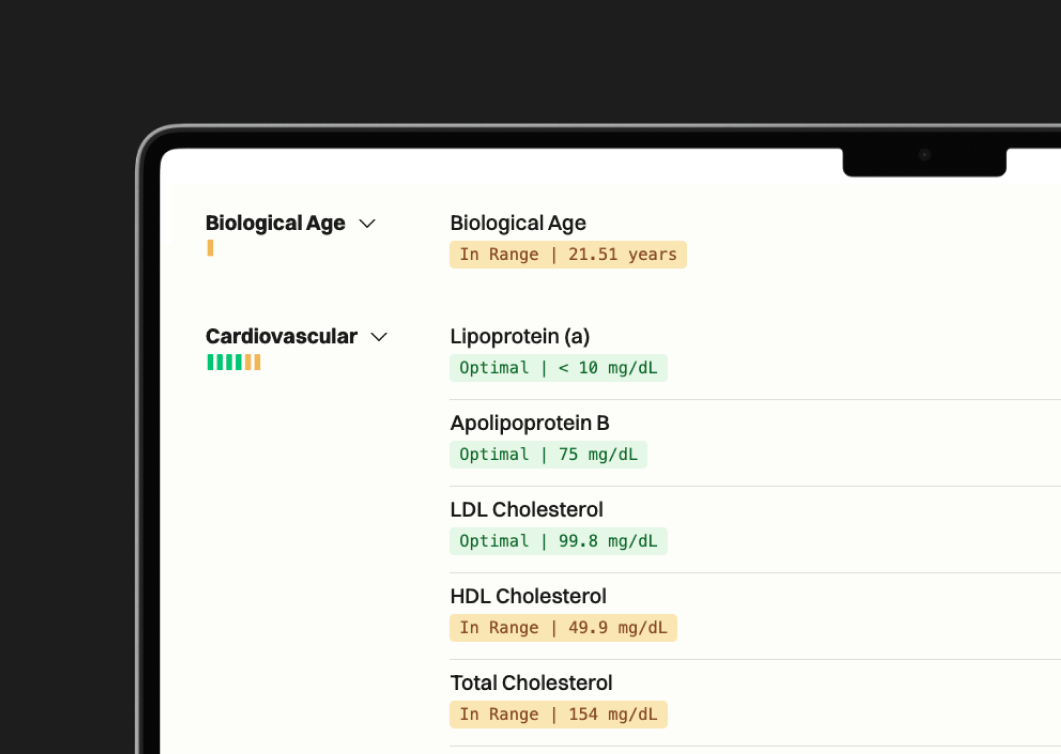Combines a liver enzyme with heart-protective cholesterol to hint at cardio‑metabolic stress.
Securely stored in EU
Cancel anytime
Test 100+ biomarkers

Less than 5 minutes waiting time. One
simple test at one of our 20+ locations.
Get your lab reports within one week.
Accessible on our app and per PDF.
All your health records stored
in a single, convenient place.

Clinicians may use this ratio as an optional risk signal when reviewing heart and metabolic health. It can highlight patterns tied to liver stress, insulin resistance, or a more atherogenic cholesterol profile. Results can guide follow-up with a full lipid panel, liver tests, and a lifestyle review. You can test this marker with Aniva across Germany and Finland.
Clinicians may use this ratio as an optional risk signal when reviewing heart and metabolic health. It can highlight patterns tied to liver stress, insulin resistance, or a more atherogenic cholesterol profile. Results can guide follow-up with a full lipid panel, liver tests, and a lifestyle review. You can test this marker with Aniva across Germany and Finland.
High: GGT is higher relative to HDL. This can reflect oxidative stress, alcohol effects, fatty liver, or metabolic strain. Consider reviewing alcohol intake, medications, and checking a full liver panel and lipids.
Low: GGT is lower relative to HDL. This often aligns with a more favorable cardio‑metabolic profile, but context still matters. Focus on consistent habits: movement, fiber-rich foods, sleep, and moderation with alcohol. This ratio is not guideline-endorsed; no standardized cutoffs. Trends over time and clinical context are most useful.



Common factors that can skew results include recent alcohol intake, heavy exercise, dehydration, smoking, and acute illness. Some medicines (statins, fibrates, niacin, antiepileptics, acetaminophen) and supplements that affect lipids or the liver can change the ratio. Pregnancy and hormonal contraception may alter HDL. Aim for consistent timing and preparation when re-testing.
Special situations (when to confirm or adjust): pregnancy, acute liver injury, recent binge alcohol use, severe illness, or starting/stopping lipid-lowering therapy.
What does a high or low result mean? A higher ratio suggests more liver enzyme activity relative to HDL and may signal metabolic or liver stress. A lower ratio often aligns with a more favorable profile, but context matters.
Do I need to fast? Fasting is not required for this ratio. If your clinician requests fasting for a full lipid panel, follow that guidance.
What can affect my result? Recent alcohol, hard workouts, illness, smoking, and medicines like statins, fibrates, niacin, or antiepileptics can change values.
How often should I test? Many people recheck in 3–6 months when monitoring lifestyle changes or after medication adjustments. Your clinician may suggest a different interval.
How long do results take? Most labs return results in 1–3 business days.
What should I discuss with my clinician? Review your alcohol use, medications, and diet, and consider a full lipid panel and liver tests to put the ratio in context.



One annual blood test (100+ biomarkers)
Clinician-reviewed insights
Personalized action plan
Access to our AI Concierge
Access to curated products


63%
44%
70%